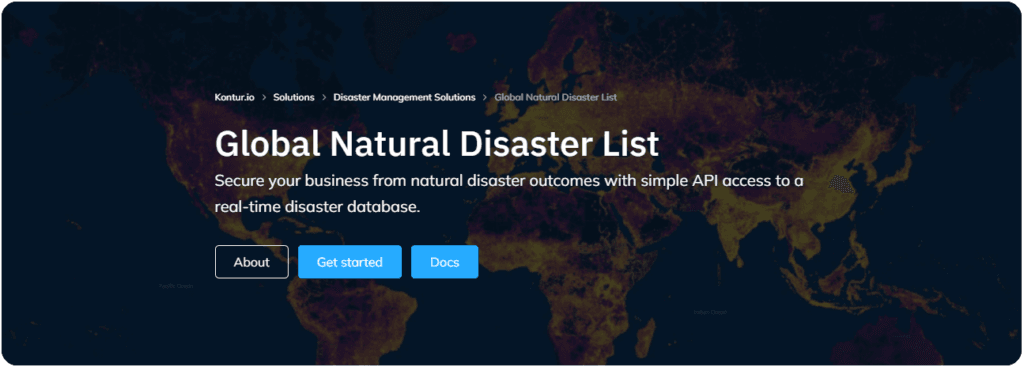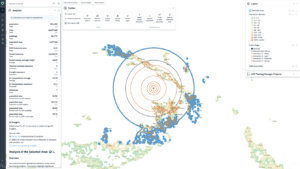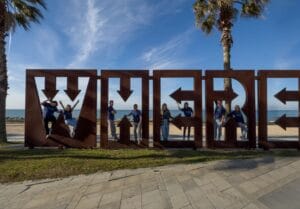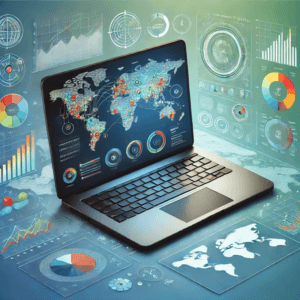What if your business had a simple way to know about any natural disaster in the world the moment it occurred — with precise geometry, severity levels, the number of people affected, and even preliminary loss estimates?
That was exactly the question a major reinsurance company from Western Europe brought to us. They didn’t just want a list of disasters — they needed a unified, enriched, and standardized real-time stream of disaster data.
We quickly realized this would be valuable not only for insurers, but also for logistics companies, governments, and humanitarian organizations.
That’s how Kontur Event Feed was born — a global API service that collects, processes, enriches, and delivers disaster-related information from trusted sources around the world.
What Makes Event Feed Unique
Numerous organizations provide disaster data: GDACS, NASA-FIRMS, NOAA, CalFIRE, and others. Each comes with different formats, varying precision, and inconsistent classifications.

Kontur Event Feed solves this by aggregating information from these sources, deduplicating events, harmonizing attributes, and enriching them with our own analytics.
We even trained a Machine Learning model that estimates potential disaster losses based on event geometry, population exposure, and other metrics — turning Event Feed into a strategic risk assessment tool, not just a news source.
You can explore more about these capabilities on the product page.

What’s Inside: Data Structure and Logic
Each disaster evolves over time. To reflect this, we designed a data model that includes:
- Event – the disaster itself (e.g., a flood or earthquake)
- Episode – a specific phase or stage of the disaster (e.g., peak storm intensity)
- Snapshot – a timestamped view of the Event, combining all current Observations
This model allows users to track not just the existence of a disaster, but also how it progresses and impacts different regions.
To dive deeper into the structure and parameters, check out our API documentation, where we explain everything from Observations and Snapshots to Event versioning.
How to Connect: Just 3 Steps
Integrating Event Feed into your platform or service is easy. Simply:
- Sign up and confirm your email to receive access credentials.
- Obtain an access token via cURL or API request.
- Start querying events using Swagger UI or RESTful API.
A full walkthrough with example commands is available on the Getting Started page.
Who It’s For
- Insurance companies use Event Feed to assess damage and update risk models in real time.
- Logistics providers rely on it to reroute supply chains during disruptions.
- Humanitarian organizations monitor it to quickly deploy aid where it’s needed most.
- Researchers and analysts explore disaster dynamics and long-term climate trends.
- Public agencies use it to evaluate regional vulnerability and improve preparedness.
Open and Commercial Access
You can start with the public version, available for free — including for commercial use.
For more advanced capabilities, our commercial option unlocks access to a broader set of sources, enriched analytics, and loss estimation models. This version can also be customized to your organization’s specific use case.
Contact us to discuss your requirements and create a tailored data stream.

Final Thoughts
Kontur Event Feed was born from a real-world business challenge — and has grown into a powerful tool for decision-makers operating under uncertainty.
We don’t just deliver data — we provide the foundation for timely, informed, and impactful action anywhere in the world.
Ready to explore it yourself? Start by signing up and making your first request — and gain access to one of the world’s most powerful disaster intelligence feeds within minutes.




